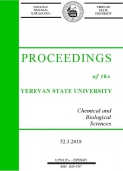Study on oxidation mechanism of ozonated wastewater treatment: color removal and algae elimination Chemistry
Main Article Content
Abstract
With the advances in the technology used to generate ozone, it is becoming more affordable to install and cheap to operate in water and wastewater treatment processes. Typically an ozone installation will pay for itself over 12 months in chlorine savings. In this paper the oxidation process of industrial wastewater treatment is studied and the effects of such a system on color removal and algae elimination are discussed in details. Ozone is highly unstable and must be generated on site. Its oxidation potential (2.07 V) is greater than that of hypochlous acid (1.49 V) or chlorine (1.36 V), and therefore it leads to much more efficient results in color removal as well as algae elimination in comparison with other alternatives in specific wastewater treatment systems.
